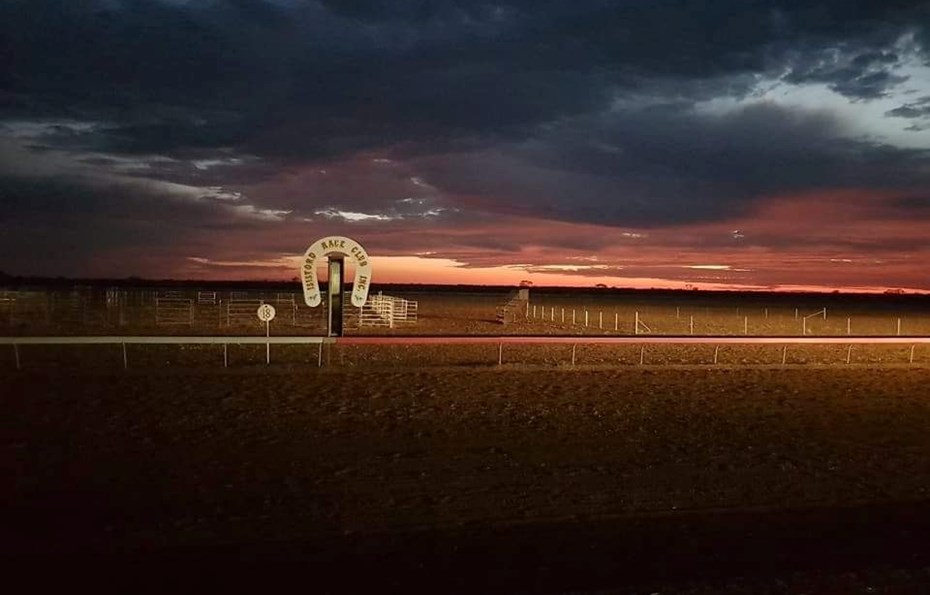Isisford is a rural town and formerly a shire in Queensland's central west. Situated on the Barcoo River, the town is 100 km south-west of Longreach and 1160 km north-west of Brisbane. The shire, of which the town was the administrative centre, covered an area of 10501 sq km and was proclaimed on 28 December 1907, the result of a partitioning of the Barcoo Shire.
The Isisford area was explored by Thomas Mitchell in 1846 and the following year by Edmund Kennedy, both reporting favourably on the district's potential. In 1856 Augustus Gregory passed through the area in his search for the missing party of Ludwig Leichhardt. Finding the area in drought, Gregory left unimpressed, later stating as Surveyor-General that he could not recommend expenditure on the development of central western Queensland.
Undeterred by Gregory's pessimism, numerous pastoral aspirants took up holdings over the next decades, beginning with John Charles Ellis who in April 1866 established the Portland Downs run. C. Lumley Hill followed Ellis in January 1867, taking up 'Isis Downs', named after the upper reaches of the Thames River, England.
Continuing pastoral settlement encouraged hawkers into the district. The misfortune of two of these early traders led to the development of the Isisford township. Attempting to cross the Barcoo, brothers William and James Whitman broke an axle and decided to settle on the banks of the river. A village soon developed, the siblings themselves erecting a hotel, butcher's shop, store and saddlery among others. Originally named 'Whittown' (or 'Wittown') by the Whitmans in self-testament to their founding enterprise, the name was changed to 'Isisford' in 1878 when a town was surveyed, based on the presence of a river ford and the settlement's proximity to Isis Downs station, 20 km east of the town.
Postal services began in 1876, and a telegraph station opened in 1881. A provisional school was also established that year, with a permanent facility erected in 1883. In 1885 a timber courthouse was erected, which also served as the venue for all church services until Church of England and Catholic churches were built in 1905 and 1907 respectively (both of which were replaced in the prosperous mid-1950s).
Banking services also began around this time, the Queensland National Bank opening a branch in 1883, which operated somewhat fitfully over the next several decades, closing and reopening as national and local financial fortunes fluctuated. Greater reliability in banking was provided for in 1910, when the Bank of New South Wales opened a permanent branch.
The 1904 Post Office Directory records that Isisford boasted numerous services and amenities, including a baker, blacksmith, cordial maker, Oddfellows Lodge, two billiard saloons and four hotels - the Isisford, Club, Belvoir and Westward Ho - each of which did considerable seasonable trade servicing shearers from the outlying properties 'on the spree'. A small Chinese community - migrants from the northern goldfields - also found a home in Isisford during the late 1800s. Largely market gardeners, the last of the Chinese had reportedly departed by the early 1920s. In addition to Isis Downs, other large pastoral properties in the shire included Emmet Downs, Welford Downs, Mount Marlow and Highlands.
Never directly connected to the western rail network, Isisford instead relied upon road connections to regional railheads. By 1914 the line from Blackall had reached Emmett, halving the road distance between the town and the railway, and in 1917 the line reached its terminus in Yaraka.
Town water was initially obtained from rain catchment and by hauling supplies from the Barcoo and local waterholes. A sub-artesian bore was sunk in 1925, although this was a non-potable supply. Greater security was achieved in 1934, when a weir was constructed across the Barcoo, and consolidated in 1960 with the construction of a pipeline from Oma.
Primarily dependent on the wool industry, Isisford was hard hit by drought in 1965 and the bust in the wool price in 1970. After peaking in 1961, the town's population rapidly declined, with an attendant downturn in services. The butcher's shop and convent school (opened in 1950) had closed, and the hospital converted to an outpatient's clinic. In 1973 the Bank of NSW branch was downgraded to agency status, before withdrawing from the town altogether. By 1981 the shire's population had nearly halved.
Both town and the district continue to rely on the wool industry, with some dependency on regional tourism. The Isisford primary school remains in operation, as does the health clinic operating out of the old hospital facilities. Isisford is further serviced by a store, fuel depot and police station, and has a town hall, swimming pool, tennis, cricket and golf facilities and a racecourse.
Two of the four hotels in existence in 1904 remain in operation - the Westward Ho (renamed the Golden West), and the Club (now Clancy's Overflow). Isisford holds a race meeting, gymkhana and wool show annually, and the Isisford Fishing Competition, in which anglers compete for local 'yellowbelly' on the Oma Waterhole. The Isis Downs shearing shed (1914) and power house are monumentally large pastoral buildings, constructed by wealthy Victorian business interests, including Sir Rupert Clarke. A working building, the woolshed has hosted outback orchestral concerts. The complex is listed on the Queensland heritage register.
From https://www.queenslandplaces.com.au/isisford-and-isisford-shire
 Isisford Race Club homepage
Isisford Race Club homepage
